Chetan Arora
My View is the Best View: Procedure Learning from Egocentric Videos
Jul 22, 2022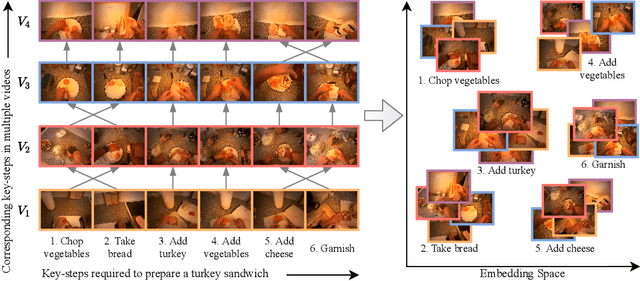

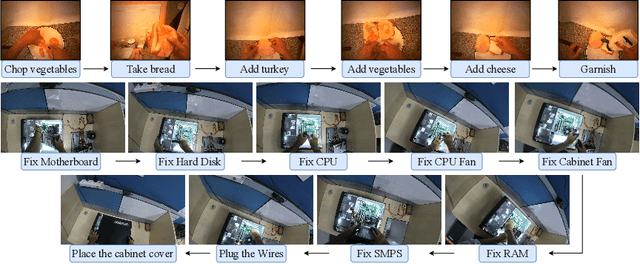
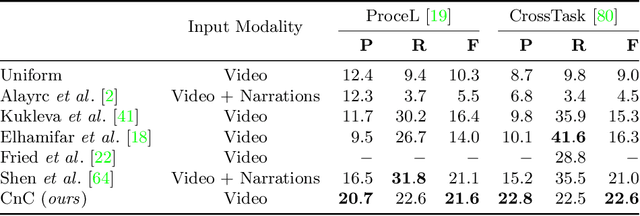
Abstract:Procedure learning involves identifying the key-steps and determining their logical order to perform a task. Existing approaches commonly use third-person videos for learning the procedure, making the manipulated object small in appearance and often occluded by the actor, leading to significant errors. In contrast, we observe that videos obtained from first-person (egocentric) wearable cameras provide an unobstructed and clear view of the action. However, procedure learning from egocentric videos is challenging because (a) the camera view undergoes extreme changes due to the wearer's head motion, and (b) the presence of unrelated frames due to the unconstrained nature of the videos. Due to this, current state-of-the-art methods' assumptions that the actions occur at approximately the same time and are of the same duration, do not hold. Instead, we propose to use the signal provided by the temporal correspondences between key-steps across videos. To this end, we present a novel self-supervised Correspond and Cut (CnC) framework for procedure learning. CnC identifies and utilizes the temporal correspondences between the key-steps across multiple videos to learn the procedure. Our experiments show that CnC outperforms the state-of-the-art on the benchmark ProceL and CrossTask datasets by 5.2% and 6.3%, respectively. Furthermore, for procedure learning using egocentric videos, we propose the EgoProceL dataset consisting of 62 hours of videos captured by 130 subjects performing 16 tasks. The source code and the dataset are available on the project page https://sid2697.github.io/egoprocel/.
Depthformer : Multiscale Vision Transformer For Monocular Depth Estimation With Local Global Information Fusion
Jul 12, 2022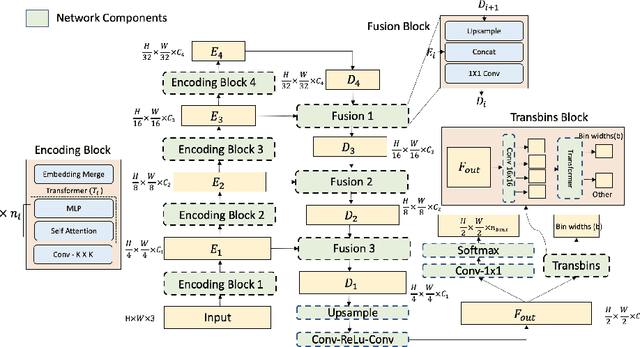
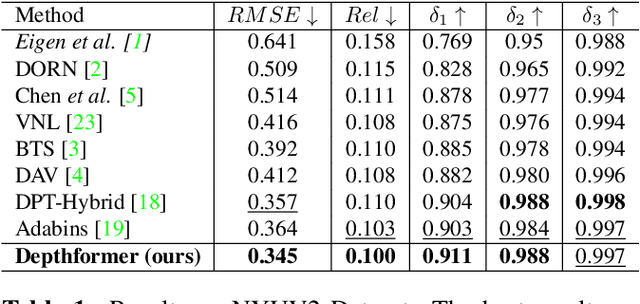

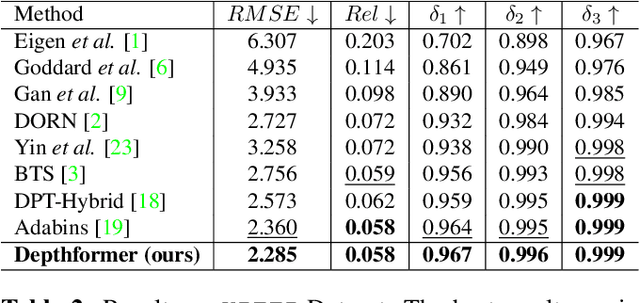
Abstract:Attention-based models such as transformers have shown outstanding performance on dense prediction tasks, such as semantic segmentation, owing to their capability of capturing long-range dependency in an image. However, the benefit of transformers for monocular depth prediction has seldom been explored so far. This paper benchmarks various transformer-based models for the depth estimation task on an indoor NYUV2 dataset and an outdoor KITTI dataset. We propose a novel attention-based architecture, Depthformer for monocular depth estimation that uses multi-head self-attention to produce the multiscale feature maps, which are effectively combined by our proposed decoder network. We also propose a Transbins module that divides the depth range into bins whose center value is estimated adaptively per image. The final depth estimated is a linear combination of bin centers for each pixel. Transbins module takes advantage of the global receptive field using the transformer module in the encoding stage. Experimental results on NYUV2 and KITTI depth estimation benchmark demonstrate that our proposed method improves the state-of-the-art by 3.3%, and 3.3% respectively in terms of Root Mean Squared Error (RMSE). Code is available at https://github.com/ashutosh1807/Depthformer.git.
TAPHSIR: Towards AnaPHoric Ambiguity Detection and ReSolution In Requirements
Jun 21, 2022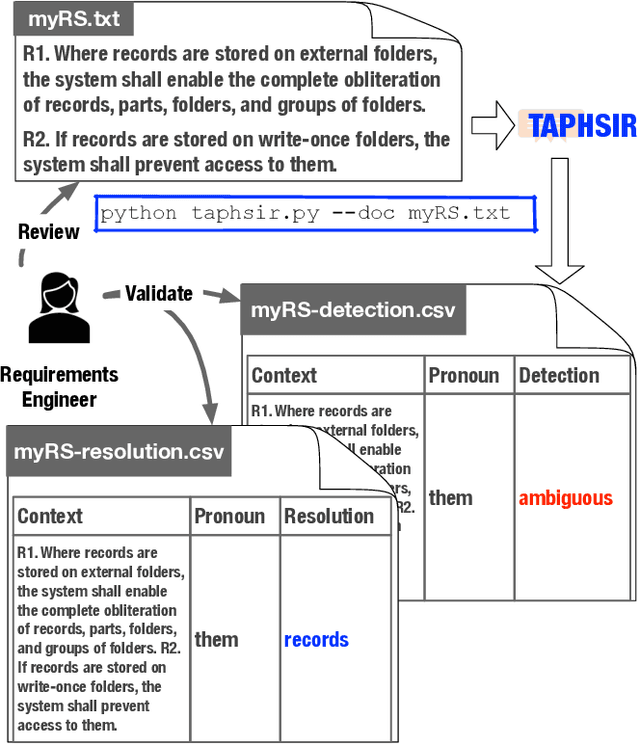
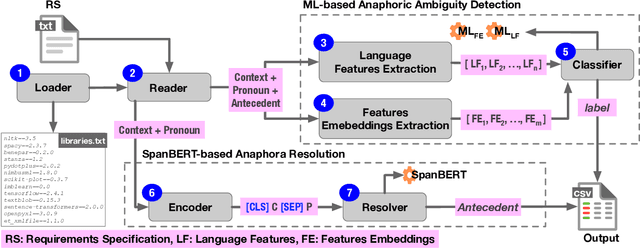
Abstract:We introduce TAPHSIR, a tool for anaphoric ambiguity detection and anaphora resolution in requirements. TAPHSIR facilities reviewing the use of pronouns in a requirements specification and revising those pronouns that can lead to misunderstandings during the development process. To this end, TAPHSIR detects the requirements which have potential anaphoric ambiguity and further attempts interpreting anaphora occurrences automatically. TAPHSIR employs a hybrid solution composed of an ambiguity detection solution based on machine learning and an anaphora resolution solution based on a variant of the BERT language model. Given a requirements specification, TAPHSIR decides for each pronoun occurrence in the specification whether the pronoun is ambiguous or unambiguous, and further provides an automatic interpretation for the pronoun. The output generated by TAPHSIR can be easily reviewed and validated by requirements engineers. TAPHSIR is publicly available on Zenodo (DOI: 10.5281/zenodo.5902117).
Surpassing the Human Accuracy: Detecting Gallbladder Cancer from USG Images with Curriculum Learning
Apr 25, 2022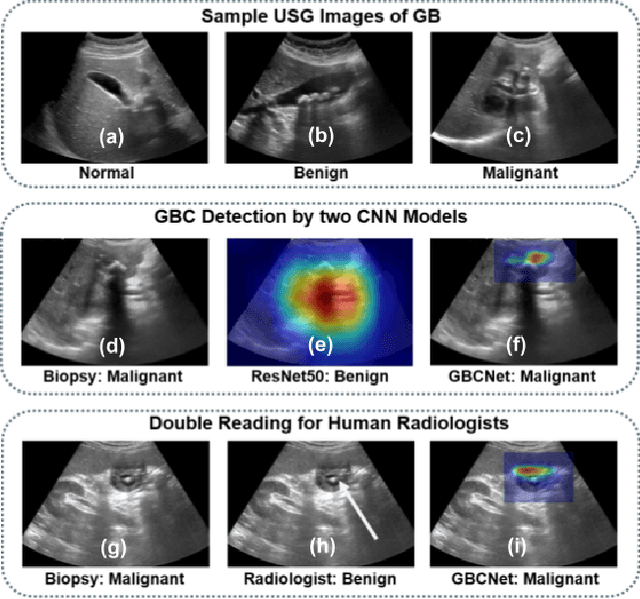
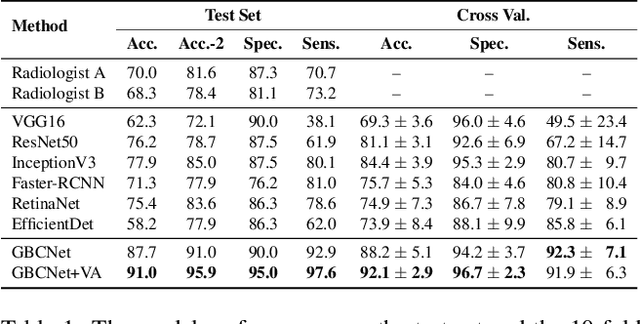
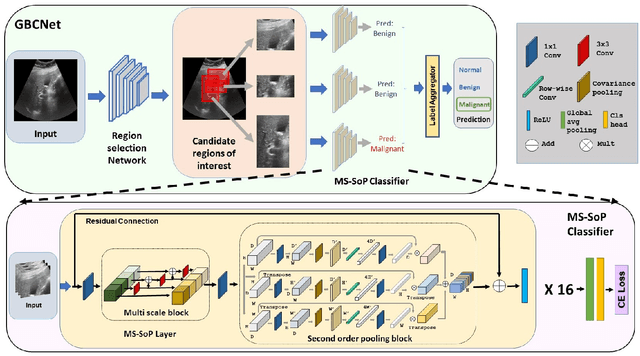
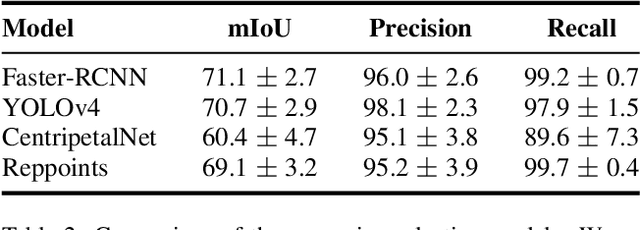
Abstract:We explore the potential of CNN-based models for gallbladder cancer (GBC) detection from ultrasound (USG) images as no prior study is known. USG is the most common diagnostic modality for GB diseases due to its low cost and accessibility. However, USG images are challenging to analyze due to low image quality, noise, and varying viewpoints due to the handheld nature of the sensor. Our exhaustive study of state-of-the-art (SOTA) image classification techniques for the problem reveals that they often fail to learn the salient GB region due to the presence of shadows in the USG images. SOTA object detection techniques also achieve low accuracy because of spurious textures due to noise or adjacent organs. We propose GBCNet to tackle the challenges in our problem. GBCNet first extracts the regions of interest (ROIs) by detecting the GB (and not the cancer), and then uses a new multi-scale, second-order pooling architecture specializing in classifying GBC. To effectively handle spurious textures, we propose a curriculum inspired by human visual acuity, which reduces the texture biases in GBCNet. Experimental results demonstrate that GBCNet significantly outperforms SOTA CNN models, as well as the expert radiologists. Our technical innovations are generic to other USG image analysis tasks as well. Hence, as a validation, we also show the efficacy of GBCNet in detecting breast cancer from USG images. Project page with source code, trained models, and data is available at https://gbc-iitd.github.io/gbcnet
A Stitch in Time Saves Nine: A Train-Time Regularizing Loss for Improved Neural Network Calibration
Mar 25, 2022
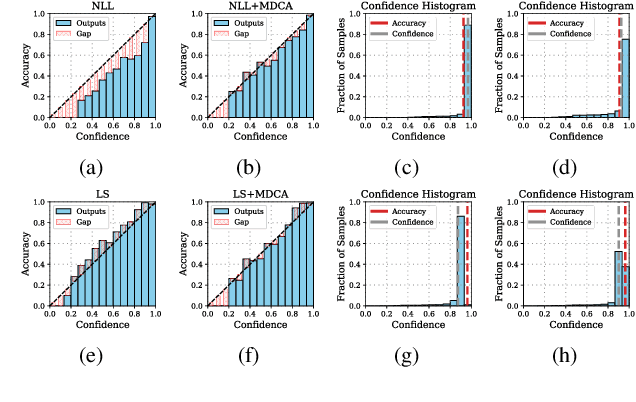

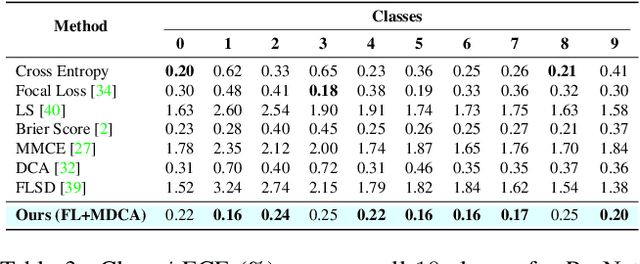
Abstract:Deep Neural Networks ( DNN s) are known to make overconfident mistakes, which makes their use problematic in safety-critical applications. State-of-the-art ( SOTA ) calibration techniques improve on the confidence of predicted labels alone and leave the confidence of non-max classes (e.g. top-2, top-5) uncalibrated. Such calibration is not suitable for label refinement using post-processing. Further, most SOTA techniques learn a few hyper-parameters post-hoc, leaving out the scope for image, or pixel specific calibration. This makes them unsuitable for calibration under domain shift, or for dense prediction tasks like semantic segmentation. In this paper, we argue for intervening at the train time itself, so as to directly produce calibrated DNN models. We propose a novel auxiliary loss function: Multi-class Difference in Confidence and Accuracy ( MDCA ), to achieve the same MDCA can be used in conjunction with other application/task-specific loss functions. We show that training with MDCA leads to better-calibrated models in terms of Expected Calibration Error ( ECE ), and Static Calibration Error ( SCE ) on image classification, and segmentation tasks. We report ECE ( SCE ) score of 0.72 (1.60) on the CIFAR 100 dataset, in comparison to 1.90 (1.71) by the SOTA. Under domain shift, a ResNet-18 model trained on PACS dataset using MDCA gives an average ECE ( SCE ) score of 19.7 (9.7) across all domains, compared to 24.2 (11.8) by the SOTA. For the segmentation task, we report a 2X reduction in calibration error on PASCAL - VOC dataset in comparison to Focal Loss. Finally, MDCA training improves calibration even on imbalanced data, and for natural language classification tasks. We have released the code here: code is available at https://github.com/mdca-loss
Adversarial Attacks on Speech Recognition Systems for Mission-Critical Applications: A Survey
Feb 22, 2022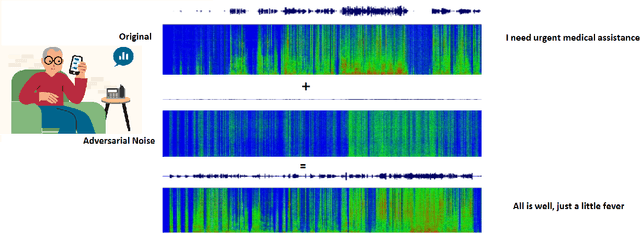
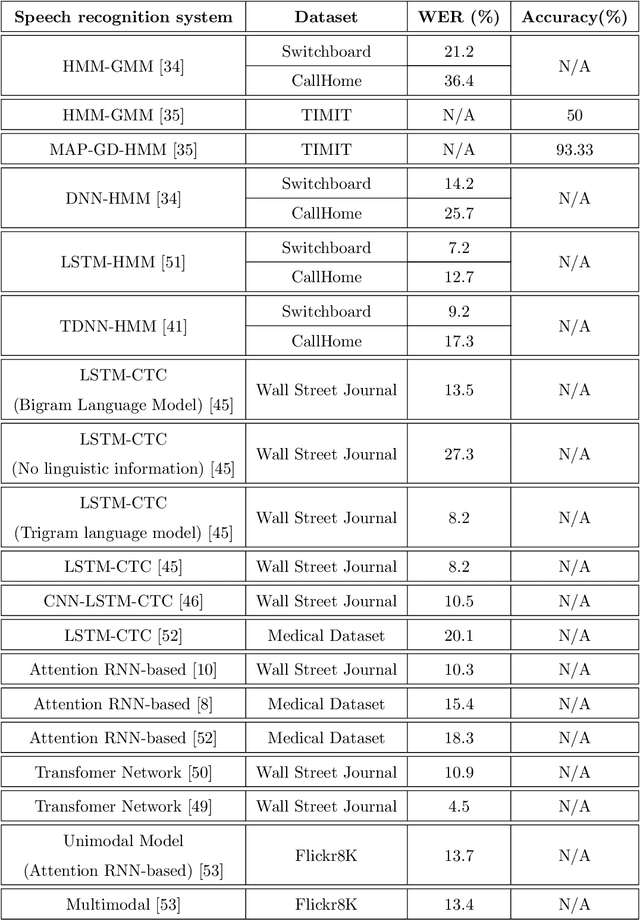
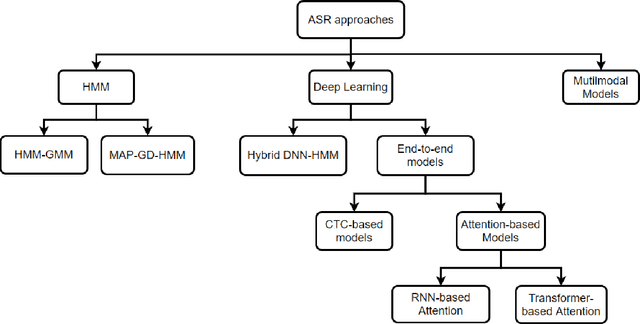
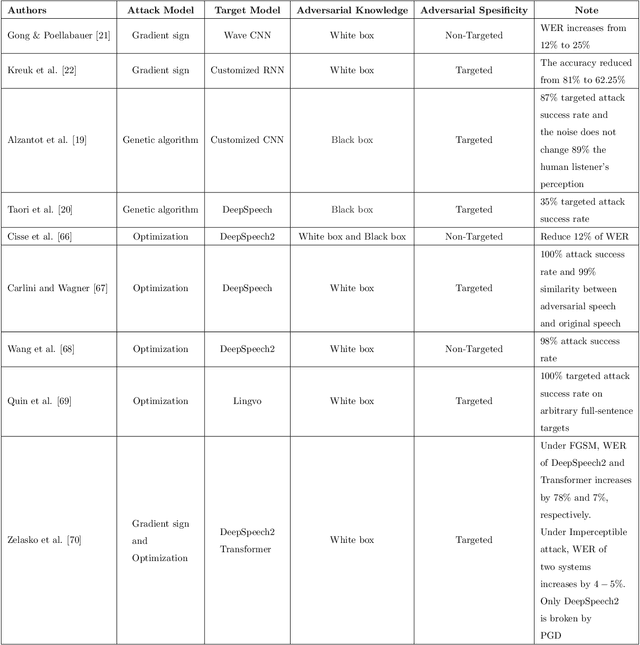
Abstract:A Machine-Critical Application is a system that is fundamentally necessary to the success of specific and sensitive operations such as search and recovery, rescue, military, and emergency management actions. Recent advances in Machine Learning, Natural Language Processing, voice recognition, and speech processing technologies have naturally allowed the development and deployment of speech-based conversational interfaces to interact with various machine-critical applications. While these conversational interfaces have allowed users to give voice commands to carry out strategic and critical activities, their robustness to adversarial attacks remains uncertain and unclear. Indeed, Adversarial Artificial Intelligence (AI) which refers to a set of techniques that attempt to fool machine learning models with deceptive data, is a growing threat in the AI and machine learning research community, in particular for machine-critical applications. The most common reason of adversarial attacks is to cause a malfunction in a machine learning model. An adversarial attack might entail presenting a model with inaccurate or fabricated samples as it's training data, or introducing maliciously designed data to deceive an already trained model. While focusing on speech recognition for machine-critical applications, in this paper, we first review existing speech recognition techniques, then, we investigate the effectiveness of adversarial attacks and defenses against these systems, before outlining research challenges, defense recommendations, and future work. This paper is expected to serve researchers and practitioners as a reference to help them in understanding the challenges, position themselves and, ultimately, help them to improve existing models of speech recognition for mission-critical applications. Keywords: Mission-Critical Applications, Adversarial AI, Speech Recognition Systems.
Attention Guided Cosine Margin For Overcoming Class-Imbalance in Few-Shot Road Object Detection
Nov 12, 2021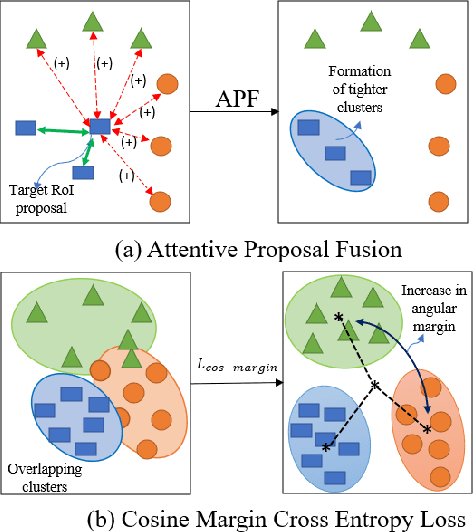

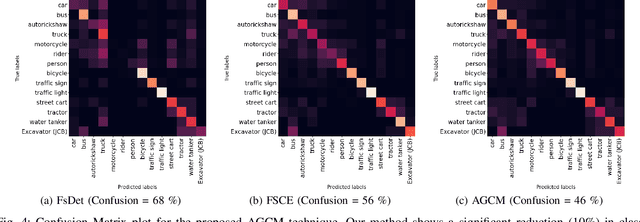
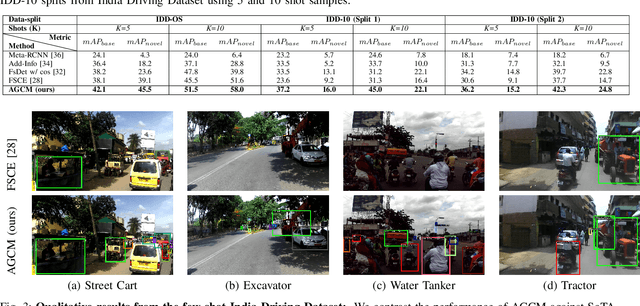
Abstract:Few-shot object detection (FSOD) localizes and classifies objects in an image given only a few data samples. Recent trends in FSOD research show the adoption of metric and meta-learning techniques, which are prone to catastrophic forgetting and class confusion. To overcome these pitfalls in metric learning based FSOD techniques, we introduce Attention Guided Cosine Margin (AGCM) that facilitates the creation of tighter and well separated class-specific feature clusters in the classification head of the object detector. Our novel Attentive Proposal Fusion (APF) module minimizes catastrophic forgetting by reducing the intra-class variance among co-occurring classes. At the same time, the proposed Cosine Margin Cross-Entropy loss increases the angular margin between confusing classes to overcome the challenge of class confusion between already learned (base) and newly added (novel) classes. We conduct our experiments on the challenging India Driving Dataset (IDD), which presents a real-world class-imbalanced setting alongside popular FSOD benchmark PASCAL-VOC. Our method outperforms State-of-the-Art (SoTA) approaches by up to 6.4 mAP points on the IDD-OS and up to 2.0 mAP points on the IDD-10 splits for the 10-shot setting. On the PASCAL-VOC dataset, we outperform existing SoTA approaches by up to 4.9 mAP points.
Multi-Domain Incremental Learning for Semantic Segmentation
Oct 23, 2021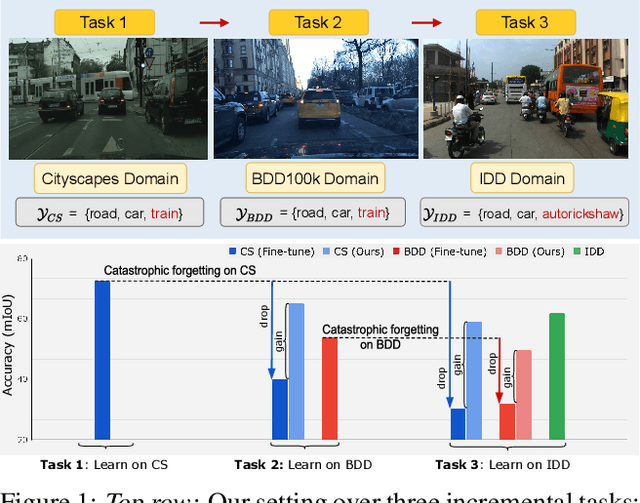

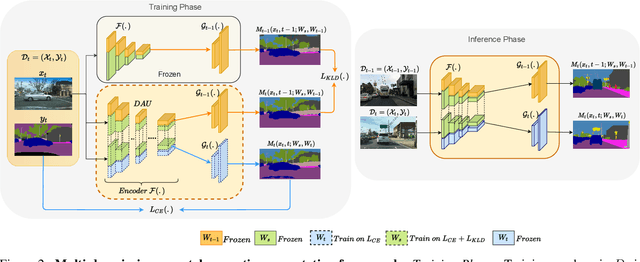

Abstract:Recent efforts in multi-domain learning for semantic segmentation attempt to learn multiple geographical datasets in a universal, joint model. A simple fine-tuning experiment performed sequentially on three popular road scene segmentation datasets demonstrates that existing segmentation frameworks fail at incrementally learning on a series of visually disparate geographical domains. When learning a new domain, the model catastrophically forgets previously learned knowledge. In this work, we pose the problem of multi-domain incremental learning for semantic segmentation. Given a model trained on a particular geographical domain, the goal is to (i) incrementally learn a new geographical domain, (ii) while retaining performance on the old domain, (iii) given that the previous domain's dataset is not accessible. We propose a dynamic architecture that assigns universally shared, domain-invariant parameters to capture homogeneous semantic features present in all domains, while dedicated domain-specific parameters learn the statistics of each domain. Our novel optimization strategy helps achieve a good balance between retention of old knowledge (stability) and acquiring new knowledge (plasticity). We demonstrate the effectiveness of our proposed solution on domain incremental settings pertaining to real-world driving scenes from roads of Germany (Cityscapes), the United States (BDD100k), and India (IDD).
Does Data Repair Lead to Fair Models? Curating Contextually Fair Data To Reduce Model Bias
Oct 20, 2021
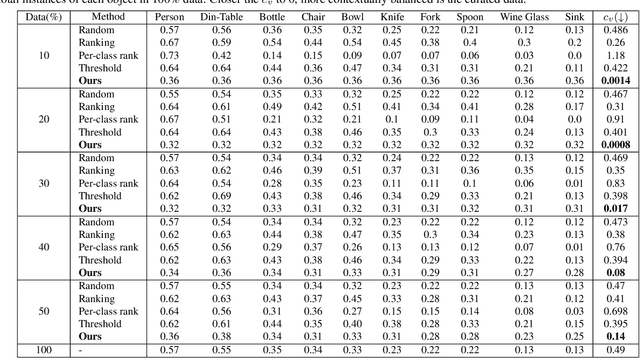
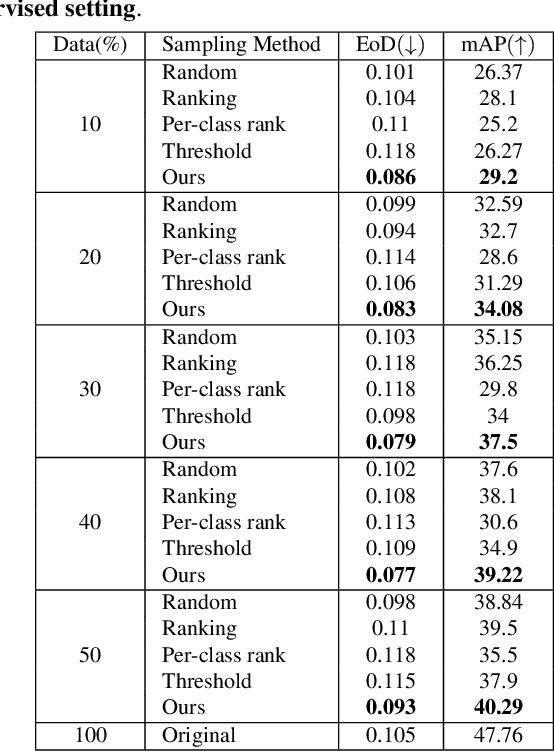
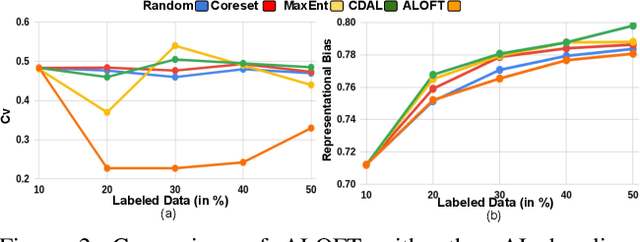
Abstract:Contextual information is a valuable cue for Deep Neural Networks (DNNs) to learn better representations and improve accuracy. However, co-occurrence bias in the training dataset may hamper a DNN model's generalizability to unseen scenarios in the real world. For example, in COCO, many object categories have a much higher co-occurrence with men compared to women, which can bias a DNN's prediction in favor of men. Recent works have focused on task-specific training strategies to handle bias in such scenarios, but fixing the available data is often ignored. In this paper, we propose a novel and more generic solution to address the contextual bias in the datasets by selecting a subset of the samples, which is fair in terms of the co-occurrence with various classes for a protected attribute. We introduce a data repair algorithm using the coefficient of variation, which can curate fair and contextually balanced data for a protected class(es). This helps in training a fair model irrespective of the task, architecture or training methodology. Our proposed solution is simple, effective, and can even be used in an active learning setting where the data labels are not present or being generated incrementally. We demonstrate the effectiveness of our algorithm for the task of object detection and multi-label image classification across different datasets. Through a series of experiments, we validate that curating contextually fair data helps make model predictions fair by balancing the true positive rate for the protected class across groups without compromising on the model's overall performance.
Efficient and Generic Interactive Segmentation Framework to Correct Mispredictions during Clinical Evaluation of Medical Images
Aug 06, 2021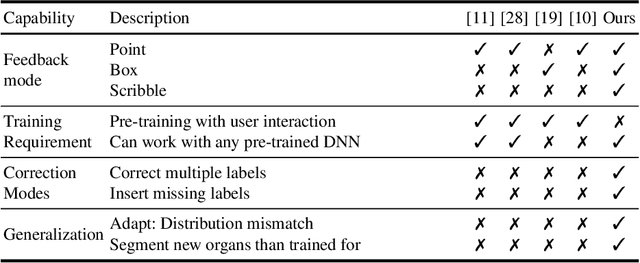


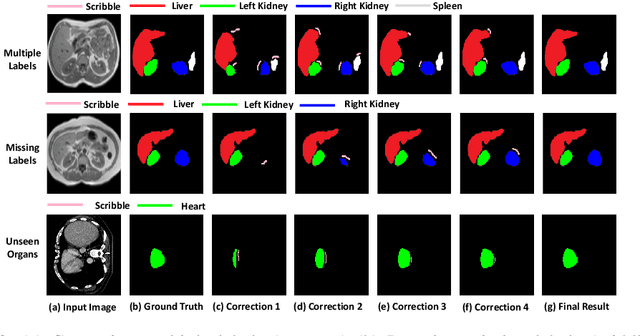
Abstract:Semantic segmentation of medical images is an essential first step in computer-aided diagnosis systems for many applications. However, given many disparate imaging modalities and inherent variations in the patient data, it is difficult to consistently achieve high accuracy using modern deep neural networks (DNNs). This has led researchers to propose interactive image segmentation techniques where a medical expert can interactively correct the output of a DNN to the desired accuracy. However, these techniques often need separate training data with the associated human interactions, and do not generalize to various diseases, and types of medical images. In this paper, we suggest a novel conditional inference technique for DNNs which takes the intervention by a medical expert as test time constraints and performs inference conditioned upon these constraints. Our technique is generic can be used for medical images from any modality. Unlike other methods, our approach can correct multiple structures simultaneously and add structures missed at initial segmentation. We report an improvement of 13.3, 12.5, 17.8, 10.2, and 12.4 times in user annotation time than full human annotation for the nucleus, multiple cells, liver and tumor, organ, and brain segmentation respectively. We report a time saving of 2.8, 3.0, 1.9, 4.4, and 8.6 fold compared to other interactive segmentation techniques. Our method can be useful to clinicians for diagnosis and post-surgical follow-up with minimal intervention from the medical expert. The source-code and the detailed results are available here [1].
 Add to Chrome
Add to Chrome Add to Firefox
Add to Firefox Add to Edge
Add to Edge